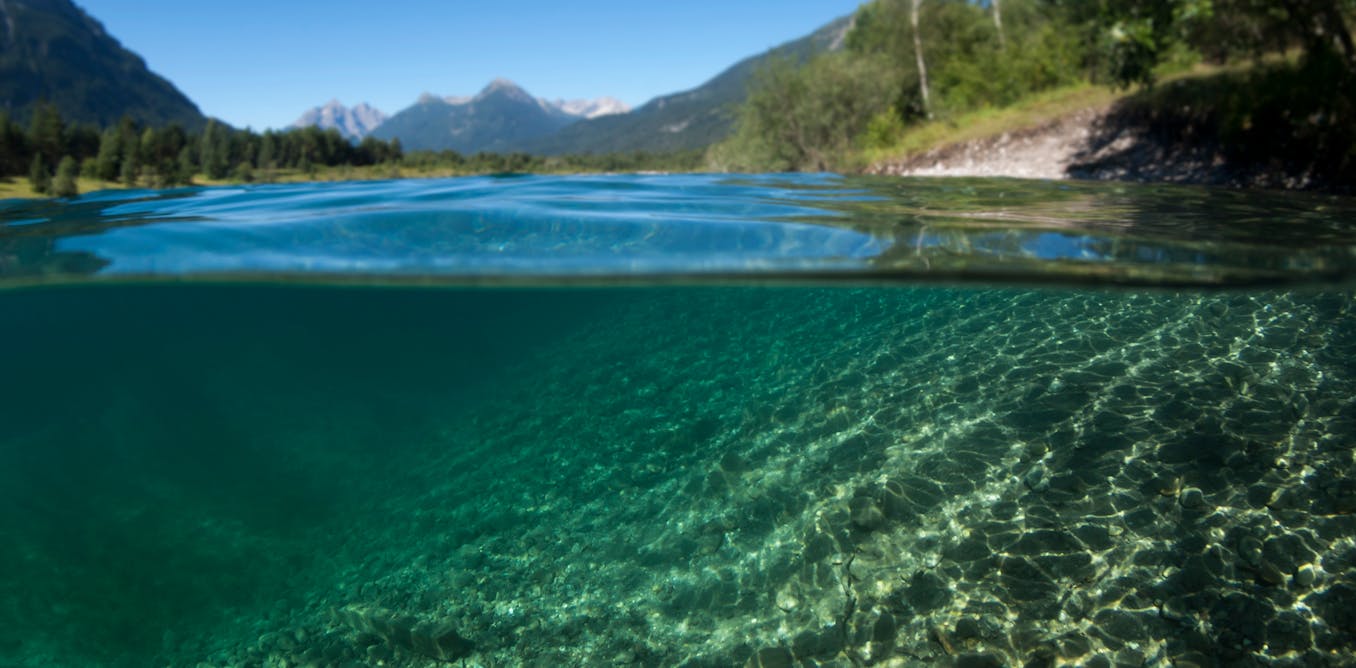Fossilized skin and other soft tissues are exceedingly rare, and it is only under special conditions that these rarest of fossils are preserved.
Most skin is preserved as impressions in the rock, but under rare conditions and incalculable odds, a 3D fossil of the actual skin can form. These fossils provide an exceptional window into the appearances, evolution and anatomies of prehistoric animals.
As graduate students in the Reisz Lab of vertebrate palaeontology at the University of Toronto, we study such fossils to help answer critical questions surrounding major evolutionary innovations.
Fossilized skin
Our study, published in Current Biology, details the remarkable discovery of not only impressions, but also a 3D fossil of skin as isolated, razor thin sheets of carbon from a 289 to 286 million-year-old cave system. These fossils were found and donated to the Reisz Lab by Bill May (a prolific local collector).
They have a texture strikingly similar to modern crocodiles, and provide insights into how some of the earliest tetrapods evolved to live on land. The fossilized skin is so well preserved that its internal structures can be identified and is the oldest such fossil currently known.
(E.D.Mooney & T. Maho), CC BY
These fossils belong to some kind of amniote, which is a diverse group of animals represented today by mammals, reptiles and birds. The earliest amniotes were reptiles, and are thought to have emerged from prehistoric amphibians in the late Carboniferous period roughly 318 million years ago.
These early amniotes saw many evolutionary innovations that allowed them to adapt to the challenges of a fully terrestrial lifestyle, including several modifications to the epidermis, the outermost layer of skin.
Skin for living on land
One of the biggest hurdles to living on land is water retention. The first tetrapods to lead largely terrestrial lives were amphibians whose skin was prone to drying out. As such, they remained bound to an aquatic environment and lived a semi-aquatic lifestyle for at least part of their lives. These early amphibians even retained bony scales typical of their fish ancestors.
It was not until the evolution of reptiles, with their skin especially suited for water retention, that these pioneers were able to adopt fully terrestrial lifestyles. This involved a thickened epidermis with differentiated alpha and beta keratin proteins, thereby forming the first epidermal scales able to provide a durable, impermeable corneous surface much like that of modern reptiles.
We also detail the preservation of such corneous bands of the epidermis in the early reptile Captorhinus aguti. These bands are arranged in a concentric pattern along the animal’s back, an arrangement that would have promoted flexibility during the side-to-side undulating motion of reptile walking. Similar banding of epidermal scales is also observed most prominently in modern worm lizards.

(E.D.Mooney & T. Maho), CC BY
A perfect cave system
These exceptional fossils were discovered in a cave system near Richards Spur, Oklahoma. This cave system consists of expansive karst networks, which often appear as vertical fissures carved into surrounding limestone by water.

(E.D.Mooney & T. Maho), Author provided (no reuse)
This locality is known for being the richest assemblage of terrestrial vertebrates from the entire Paleozoic Era. The abundance of largely disarticulated skeletons is likely the result of deposition of the remains during large monsoonal rains. Articulated or semi-articulated remains are less common, and may be the result of animals falling into these caves or being washed in as one piece.
Cave conditions are known to promote preservation of animal remains through desiccation, permeation by mineral rich ground water and burial by fine sediments.
At the Richards Spur locality, such preservation was likely aided by oil seep hydrocarbons, which have stained most fossils black or brown. Saturation of remains prior to or shortly after deposition likely influenced the growth of minerals involved in making the fossils so that they were more likely to be well fossilized. Desiccation also likely played a critical role in the exceptional preservation of skin by prolonging its structural longevity prior to fossilization.
These remarkable skin fossils not only shed light on critical innovations necessary for the conquest of land by early amniotes, but also highlight the unique influence of cave conditions and oil seep hydrocarbons on the production of exceptional fossils.



